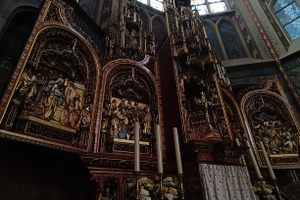About
When an enthusiast of the avant-garde artist Truus Schröder-Schräder commissioned a house for herself and her three children, she asked Dutch architect Gerrit Rietveld to design a home with no walls.
The result was the Rietveld-Schröder House, built in 1924 in Utrecht. The house is arguably the only building constructed completely within the spirit of the 1920s De Stijl art movement, which advocated a paring down to the basics of form and color. The architectural features, including walls, furniture, and pipes, are decorated with solid primary colors, and flow seamlessly from inside to outside. The windows are hinged to open exclusively at 90-degree angles to protect the visual integrity of the intersecting planes. The resulting eclectic-yet-disciplined style of the façade is striking- a radical contrast to the more conservative Dutch buildings that make up the surrounding neighborhood.
The most interesting area of the house is the upper level, which is totally without internal walls (with the exception of a separate toilet and bathroom). Instead, there is a system of sliding and revolving panels, which allow the space to change according to need. The floor can either function as a completely open zone or be maximally partitioned into three bedrooms, a bathroom, and a living room - with many other possible intermediate arrangements.
Rietveld, who had become Schröder-Schräder's lover, kept a studio on the ground floor until 1932. The house first became a museum somewhat by accident. Fascinated by the building's unique character, visitors simply started stopping in to take a look around. The site became so popular that Schröder-Schräder had a special room built on the roof to escape the crowd. (the room was taken down in the 1950s). Nevertheless, she would continue to live in her beloved home until her death in 1985, when she was 95 years old. The building, now officially a museum, became a UNESCO World Heritage Site in 2000.
Related Tags
Published
November 10, 2015


































